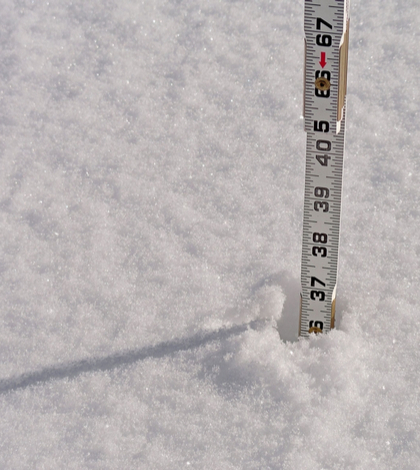The Department of Water Resources (DWR) conducted the second manual snow survey of 2020 at Phillips Station yesterday and the results are somewhat less than stellar. The survey showed the snowpack 40.5 inches deep and a snow water equivalent (SWE) of 14.5 inches. This is 79 percent of average for this time and location.
“After a good start in December, January saw dry conditions that added little to the Sierra snowpack,” said DWR Director Karla Nemeth. “As climate change continues to impact California’s snowpack, we look to actions described in the recently released California Water Resilience Portfolio to meet the challenges brought by weather variability to California’s water supply.”
On top of the manual readings, DWR also collects readings from 130 electronic snow sensors scattered throughout the state. As of yesterday, the measurements indicated that the snowpack’s water equivalent is 12 inches, or 72 percent of the January 30 average statewide.
“The foundation of California’s water supply forecasting system remains the manual snow surveys,” said Sean de Guzman, chief of DWR’s Snow Surveys and Water Supply Forecasting Section. “The data gathered from these surveys are used to create seasonal runoff forecasts and define how wet or dry a year is based on the total precipitation, including both rain and snow, and runoff.”
This critical snow survey data and forecasts are used by:
- Operators of flood control projects to determine how much water can safely be stored in a reservoir while reserving space for predicted inflows. This includes the State Water Project, U.S. Bureau of Reclamation for the Central Valley Project, and local reservoir operators.
- Other state agencies, including the Office of Emergency Services and the State Water Resources Control Board, to develop responses to drought or flood emergencies.
- Public and private utilities to determine what percentage of their electric energy generation will be hydropower.
- Water districts to manage surface and groundwater storage, allocate the available supply, plan water deliveries, and coordinate conjunctive use operations.
- Agricultural interests to determine crop planting patterns, groundwater pumping needs, and irrigation schedules.
- Researchers to improve snow melt runoff forecasting methods and perform climate change analyses.
 California Water News Daily Your Source For Water News in California
California Water News Daily Your Source For Water News in California


